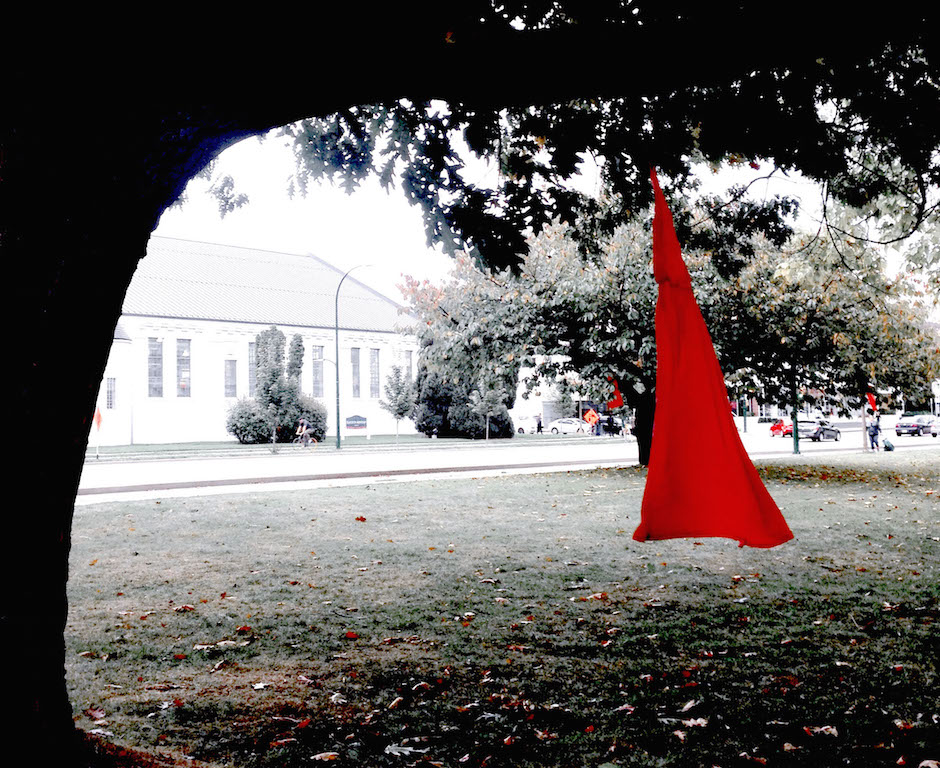A red dress has become the symbolic art-based representation of the issue of missing and murdered Indigenous women.
It’s a simple, beautiful and powerful symbol representing both women (the dress) and spirit (the colour red).
Jamie Black is a Metis artist who is using the red dress in her work to draw attention to the issue of murdered and missing Indigenous women. She has collected over 600 red dresses, which have been displayed in places like Winnipeg as part of the REDress project, a play on the word “redress,” defined as a remedy or the setting right of past indiscretions.
Art has always been used as a language, especially to discuss difficult topics such as the genocide of Indigenous women.
Estimates vary but the number of women and girls who have gone missing over the generations could be as high as 3,000. From 2001 to 2015, the homicide rate for Indigenous women in Canada was almost six times higher than the homicide rate for non-Indigenous women, representing “4.82 per 100,000 population versus 0.82 per 100,000 population.”
Walking with our Sisters is another art installation trying to bring attention and justice to the many women who have disappeared. The project began in 2012, with a call to action on Facebook. People were asked to design and create moccasin tops or vamps. By July 2013, project leaders had received 1,600 vamps, more than tripling their initial goal of 600. The installation continues to tour throughout 2019.
Charla Sylvester, a photographer originally from the Beausoleil First Nation in Ontario, was influenced by the death of Tina Fountaine, whose body was pulled from the Red River in Winnipeg in 2014. Her death at 15 caused national outrage. A jury later found Raymond Cormier not guilty of second-degree murder in her death.
In one photograph, Sylvester’s cousin lies on the ground looking up at the camera, her mouth covered and her body wrapped and taped up in a Canadian flag. The photograph is chilling.
And in the Red Embers art installation, banners are hung at Allan Gardens in downtown Toronto, created by a team of Indigenous artists from across the country to symbolize community resilience.
The installation is a series of 13 tall black wooden gates placed throughout the park, the number representing the number of moons each year and Grandmother Moon who is charged with looking after Indigenous women and girls.
According to the Red Embers website, framing the red banners in black is a metaphor for the wood holding its structural integrity against flames.
The display will be up until early October 2019 when women gather at the park each year to celebrate their resilience against genocidal murder.
A veteran activist and journalist for rabble.ca, Krystalline Kraus is an intrepid explorer and reporter from Toronto.
Photo: Edna Winti/Wikimedia Commons
Make rabble sustainable. Please consider supporting our work with a monthly donation and join us as we take on the 2019 election. Support rabble.ca today for as little as $1 per month!





